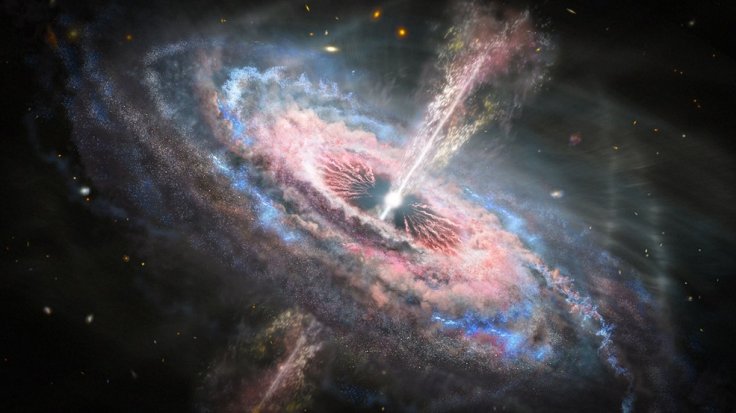A team of astronomers explained how certain x-shaped galaxies are formed. According to their observations, the black holes at the center of galaxies play a huge role in forming their structures.
The team featured members of the South African Radio Astronomer Observatory, National Radio Astronomy Observatory, the University of Pretoria and Rhodes University. They presented their findings through a new study published in the Monthly Notices of the Royal Astronomical Society.

Nature Of X-Shaped Galaxies
Usually, galaxies such as Milky Way have twin jets of radio waves that extend far into their surroundings. These jets, which move in opposite directions, originate from the black hole at the galactic center.
Some galaxies, however, have four jets emanating from their centers. This causes the galaxy to form an x-shaped structure. One theory regarding the formation of these kinds of galaxies suggests a change in the directional spin of the central black hole. As it spins, the jets of radio waves flowing from it also moves.
Observing X-Shaped Galaxies
Recently, a team of astronomers was able to observe x-shaped galaxies and their black holes. Through their observations, the astronomers were able to understand how these kinds of galaxies were formed. The astronomers were able to clearly observe the galaxies using the MeerKAT telescope, which consists of 64 radio dishes in the Karoo desert in South Africa's Northern Cape Province.
Through MeerKat, the astronomers were able to observe the x-shaped galaxies in great detail. It allowed them to see how the black hole assisted in the formation of the galaxy's strange shape. "MeerKAT is one of a new generation of instruments whose power solves old puzzles even as it finds new ones—this galaxy shows features never seen before in this detail which are not fully understood," William Cotton, the lead author of the study, said in a statement.

How Black Holes Shape Galaxies
According to the astronomers, as the central black holes of galaxies continue to feed, some cosmic materials often fall back into the galaxy. As they return to the galaxy, they get deflected into different directions, adding two more jets of radio waves. An x-shaped structure then appears as four jets of radio waves extend from the galactic center.









